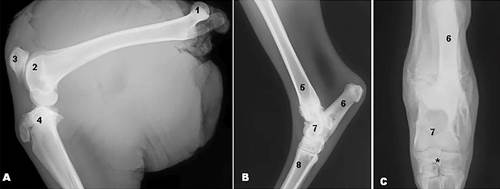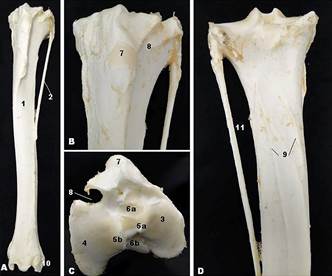Abstract:
The knowledge of anatomical structures found in wild animals is important for the practice of medical and surgical clinic. Thus, the aim of this study was to describe the osteology and radiographic anatomy of the femur, patella, tibia, fibula, tarsal, metatarsal and phalanges of the Marshdeer Blastocerus dichotomus as a reference for clinical use and species identification. Most structures were similar to those found in domestic animals, with special features of this species. Noteworthy is, for example, the absence of the third trochanter of the femur. Although a ruminant, the Marshdeer has a fibuyla similar to the one described for the horse. B. dichotomus has four fingers on each limb, formed through three phalanges, only the third and fourth finger touch the ground, and the second and fifth finger is rudimentary. It has four proximal and two distal sesamoid bones, and sesamoid bones near the gastrocnemius muscle do not exist.
Index Terms:
Marshdeer; Blastocerus dichotomus; thigh; leg; wild animals; anatomy

 Thumbnail
Thumbnail
 Thumbnail
Thumbnail
 Thumbnail
Thumbnail
 Thumbnail
Thumbnail
 Thumbnail
Thumbnail
 Thumbnail
Thumbnail





